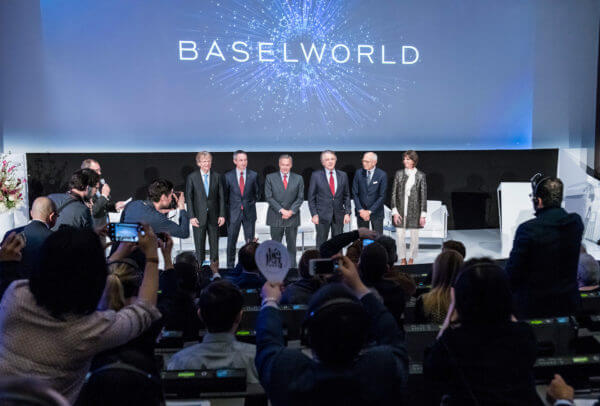It was always a case of “in at the deep end” – a ten-day marathon with 150,000 attendees pushing their way through the halls to see the 1,500 exhibitors that had travelled from around the world to set the seal on the watchmaking year. Baselworld was big and bold, the event no-one in the industry could afford to miss; a reunion of brands large and small, jewellers and lapidaries, machine-tool manufacturers and national pavilions flying the colours of Hong Kong or Japan. Baselworld was a flagship for discovery and innovation, a ritual for an industry out to conquer the world. So what if there were a few gripes, usually money-related; the desire to serve the cause of watchmaking, and Swiss watchmaking above all, prevailed. Alas, an unpredictable economy coupled with changes in how watches reach the end customer and the emergence of a new generation of buyers has dampened enthusiasm. In the space of two years, Baselworld has lost substance. And not just a little. The number of exhibitors has plummeted from 1,500 in 2016 to 650 this year. Among them, the number of Swiss brands has fallen from 220 last year to 130 this year, of which 104 are watch firms.

And yet the economic picture is no longer so bleak. Speaking at a press conference ahead of this year’s event, the president of the Swiss Exhibitors’ Committee, François Thiébaud, declared that “Swiss watchmaking isn’t doing so badly.” The strong Swiss franc, sliding sales in Hong Kong and political uncertainty are now largely in the past. After an arduous two years, the Swiss watch industry turned a corner in the second half of 2017 when exports rose by 4.9%. Figures for January and February of this year are even more promising, with shipments climbing in excess of 12% and strong comebacks in China (34%), Hong Kong (28%) and the US (11%), which are the top three markets for Swiss watch brands. In this light, and knowing that watchmakers operate in long cycles and tend not to overreact at the first sign of a glitch, it would be wrong to blame an inhospitable economic environment for this exodus. The industry has seen worse, and survived.
This is the biggest scaling-down Baselworld has known in its 100-year history, and whatever anyone else might think, for Baselworld’s management it’s still the economy, stupid. “There is no denying that the industry is undergoing some profound changes,” commented Sylvie Ritter, managing director of Baselworld, on the opening day. “We’re seeing greater concentration taking place that strengthens the biggest players but poses a problem for the less well-positioned brands. And this has an impact on Baselworld.” According to Ms. Ritter, the fair’s executive had two options: “expansion (sic!) or concentration”. No prizes for guessing which of the two they chose. From now on, Baselworld is focused on quality, the best of the best, the elite behind the vast majority of exports. Which leaves only one conclusion: mediocre and low-budget brands, far too many of which have been allowed in these past years, aren’t invited to the ball.
The most astonishing thing about this interpretation – which is singularly lacking in self-criticism and smacks distastefully of eugenics – is how far off the mark it falls. The fundamental question, nonetheless, is the purpose fairs such as Baselworld serve in a digital age. No-one is contesting the need for well-intentioned individuals to meet face to face, any more than the importance of being able to touch and feel products whose principal virtue is their emotional appeal. But anything beyond this basic truth is subject to caution. Should we still be building gargantuan booths that take a month to put together to show watches, most of which were designed decades ago? Is there still any need to ship in celebrities who, honest to goodness, adore the watch they’ve been asked to wear? Is it really necessary to keep the champagne flowing for a bunch of freeloaders looking for handouts? Welcome to Planet Luxury! However much of a caricature it may be, it’s a portrait that raises important questions about the future form trade fairs should take. One thing is for sure: Baselworld must change.















